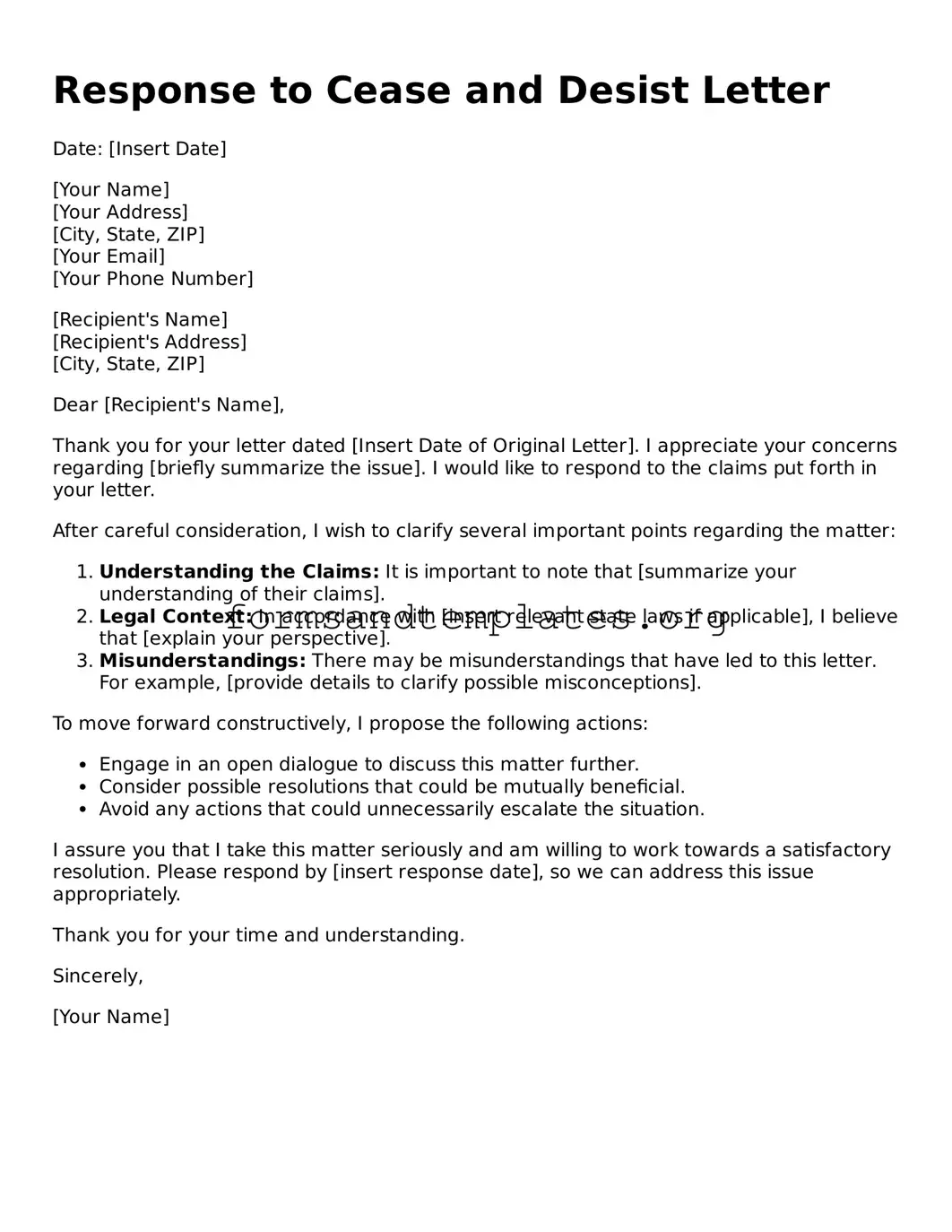Response to Cease and Desist Letter
Date: [Insert Date]
[Your Name]
[Your Address]
[City, State, ZIP]
[Your Email]
[Your Phone Number]
[Recipient's Name]
[Recipient's Address]
[City, State, ZIP]
Dear [Recipient's Name],
Thank you for your letter dated [Insert Date of Original Letter]. I appreciate your concerns regarding [briefly summarize the issue]. I would like to respond to the claims put forth in your letter.
After careful consideration, I wish to clarify several important points regarding the matter:
- Understanding the Claims: It is important to note that [summarize your understanding of their claims].
- Legal Context: In accordance with [insert relevant state laws if applicable], I believe that [explain your perspective].
- Misunderstandings: There may be misunderstandings that have led to this letter. For example, [provide details to clarify possible misconceptions].
To move forward constructively, I propose the following actions:
- Engage in an open dialogue to discuss this matter further.
- Consider possible resolutions that could be mutually beneficial.
- Avoid any actions that could unnecessarily escalate the situation.
I assure you that I take this matter seriously and am willing to work towards a satisfactory resolution. Please respond by [insert response date], so we can address this issue appropriately.
Thank you for your time and understanding.
Sincerely,
[Your Name]
